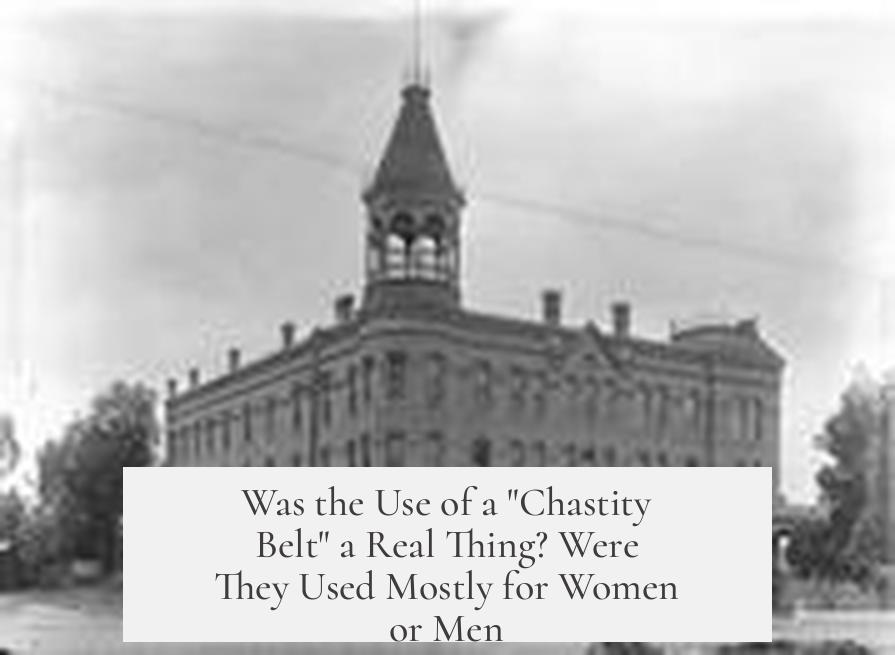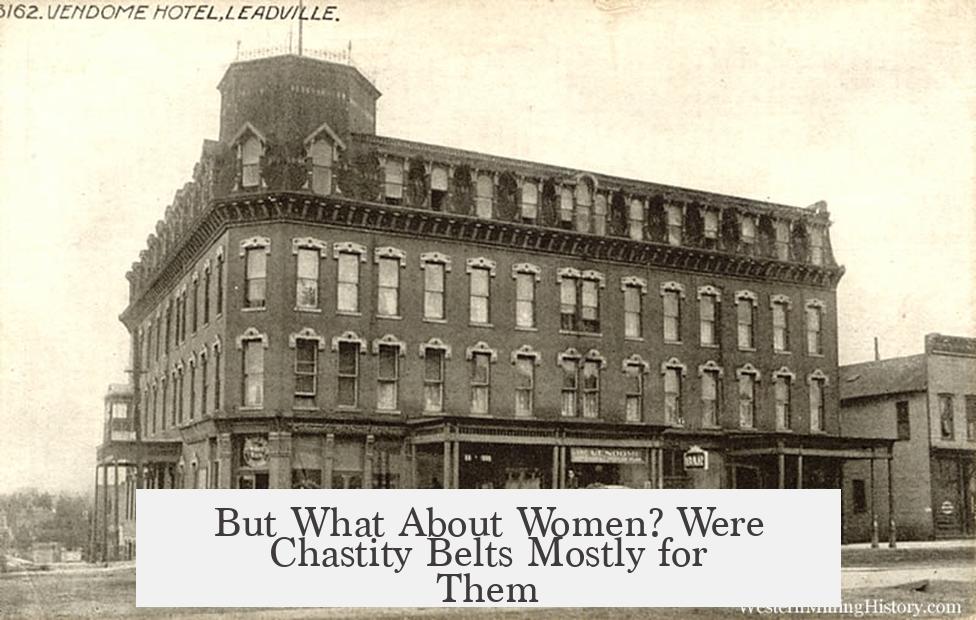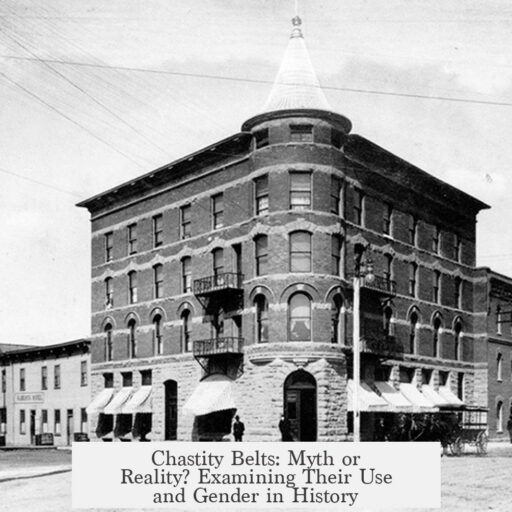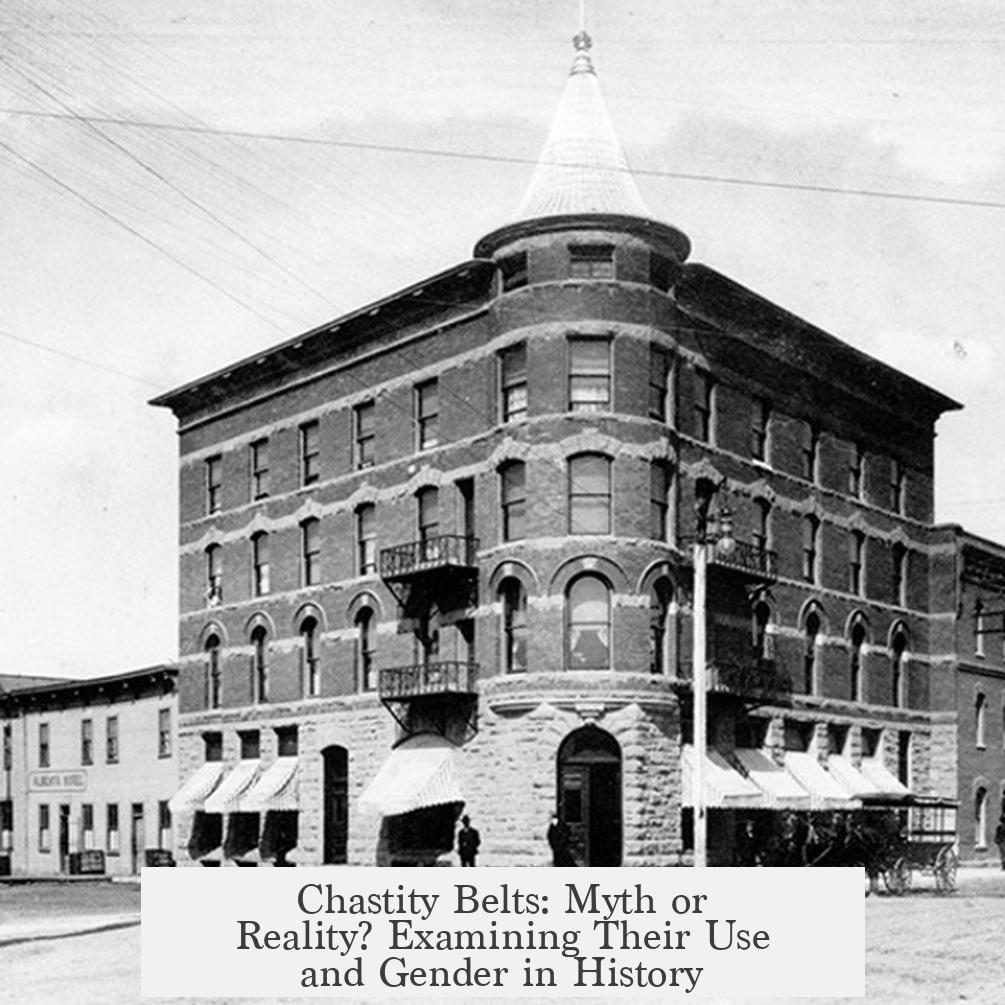The use of chastity belts as physical devices is highly dubious and largely considered a myth. Historical evidence supporting their widespread use is scarce, and most existing examples are identified as 19th-century creations or fabrications rather than authentic medieval artifacts. The notion of locking women with metal belts to ensure chastity appears to be exaggerated folklore rather than documented medieval practice.
Evidence suggests chastity belts are mainly a product of Victorian-era imagination. Scholars like Albert Classen, in his 2007 work The Medieval Chastity Belt: A Myth-Making Process, argue the idea is a modern myth. He thoroughly examines historical texts and artifacts, finding no reliable proof that chastity belts were used as tools for controlling women’s sexuality in the Middle Ages. Most references to the belts in earlier centuries appear satirical or metaphorical rather than serious.
Physical chastity devices now displayed in museums mostly date from the 19th century. These were created amid a market for sensational relics and curiosities with erotic or punitive themes. Such artifacts likely served theatrical or voyeuristic purposes rather than practical ones.
While the idea of chastity belts for women is debunked, historical methods of enforcing chastity did exist, especially on men. Castration was common in various cultures, producing eunuchs tasked with guarding harems or serving in official capacities, notably in China and the Ottoman Empire.
Female genital mutilation, a brutal practice aimed at controlling female sexuality, also functioned as a measure to impose chastity. This practice, distinct from the chastity belt myth, has been documented and unfortunately continues in some regions.
The chastity belt myth also exemplifies a broader tendency to misinterpret or romanticize medieval customs. It fits into a pattern of falsely attributing barbaric practices to the past that serve modern narratives about progress and morality.
- Chastity belts lacked credible medieval usage and are mainly 19th-century fabrications.
- Men, not women, historically faced enforced chastity via castration in several cultures.
- Female genital mutilation is a real but separate practice aiming to control female sexuality.
- The chastity belt myth serves as a modern construct reflecting misconceptions about medieval history.
Was the Use of a “Chastity Belt” a Real Thing? Were They Used Mostly for Women or Men?

Yes, the idea of chastity belts existed, but their actual use—especially in medieval times—is highly questionable and likely rare, if it happened at all. Most evidence points to them being more myth and tourist attraction than practical medieval gear.
Let’s unlock this curious question about chastity belts, because, honestly, who hasn’t pictured an iron-clad device clamping fiercely on some poor soul—mostly women? But did history really wear such a metal lock-and-key drama?
Chastity Belts: Fact or Fantasy?
First off, the tale of chastity belts is as suspicious as that one friend who always says, “Trust me, it was *this* big” without photos.
The story of chastity belts is pretty lurid but dubious. According to scholars like Albert Classen—a German expert who spent years tearing apart the tale—the idea is largely a myth. In “The Medieval Chastity Belt: A Myth-Making Process,” Classen reveals how supposed medieval chastity belts mostly pop up in 19th century markets more as salacious curiosities than genuine artifacts.
Imagine 19th-century blacksmiths, getting creative to cash in on Victorian-era fantasies about the past. They churned out metal contraptions that they claimed were “authentic” chastity belts, probably as a spin-off of the dodgy relic business from earlier centuries. So when you see those gleaming iron belts in museums, chances are they were made long after the Middle Ages ended—think industrial revolution knockoffs rather than medieval costume pieces.
Historical References: Jokes or Serious Business?
Medieval documents mention chastity belts, but mostly jokingly or as stereotypes. In 1405, a German writer described a chastity belt more like an apparel style—“an apron for Florentine ladies”—which sounds like early social comedy rather than a locking device. There’s no strong evidence that these funny hints ever turned into actual locked belts controlling women’s private parts.
What about the idea that chastity belts locked women up for their husbands while they went off to war or adventure? It’s a romantic, movie-ready story, but historians mostly roll their eyes at this. Real medieval wives probably had more pressing daily challenges than worrying whether their husband handed their lingerie keys to the local blacksmith.
Philosophy of the Chastity Belt Myth
Classen pushes this myth into a philosophical corner. Along with other false medieval ideas—like the flat earth myth—the chastity belt story lets modern society feel smug about outgrowing “barbaric” past beliefs.
It’s like the wearing of chastity belts serves as a symbolic punchline to how far we’ve evolved socially and scientifically. Yet this is a simplified narrative often propped up without solid proof.
But What About Women? Were Chastity Belts Mostly for Them?

The popular image is of chastity belts as weapons against female infidelity or promiscuity—locked down during a husband’s absence—but thanks to the dubious historical record, their usage on women is questionable.
And what about men? While men didn’t wear metal locks to control their desires, actual historical impositions of chastity did happen—just in drastically different ways. The most infamous method? Castration. Rather unpleasant, right?
Many civilizations, including the Ottoman Empire and ancient China, used castration to create eunuchs who often served in palaces and harems. This was a literal, irreversible way to enforce male chastity (or, more accurately, prevent sexual activity), but it had nothing to do with whimsical metal belts.
Female Circumcision: Another Gruesome Reality
Sadly, control over female sexuality took other disturbing forms. Female circumcision or genital mutilation was and is practiced in some cultures as a form of sexual control and chastity enforcement.
This practice is a harsh, real-world contrast to the fanciful myth of the chastity belt—physical, painful, and ongoing in some parts of the world today.
What Can We Learn?
- Chastity belts as physical devices were most likely not widespread or practical tools in history.
- They pop up mostly in 19th-century museums and catalogs, probably serving Victorian imaginations more than medieval realities.
- Control of chastity was real but took other forms—mainly harsh restrictions on men (castration) and cruel practices on women (female circumcision).
- The myth itself reflects how modern people often misunderstand and oversimplify the past.
Should You Be Skeptical?
Absolutely! When a story sounds lurid and sensational, like the chained-up medieval maiden, it’s often worth a double-check. Museums sometimes display beautiful but deceptive curios. And historical “facts” can be myth dressed up with shiny hardware.
Next time you see a chastity belt exhibit, try to peek at its dating. Is it from the Middle Ages, or 19th century? Are there written records, or is it an artistic fantasy? These questions help you decode history’s gossip.
Final Thoughts: The Real “Chastity Lock” Is Skepticism
Was the chastity belt real? Maybe a tiny bit. Mostly, no. Were they used mostly for women? The myth says yes—but real evidence says, probably not; at least not in the way we think.
Men faced chastity control, too, but in ways less Hollywood and more historic—for better or worse.
Before buying into medieval myths, remember: history can be less dramatic—but often more fascinating—than legend. So, instead of imagining iron belts clanking around, imagine societies wrestling with power, control, and human desire—sometimes gently, often brutally, but rarely with a neat little lock.




